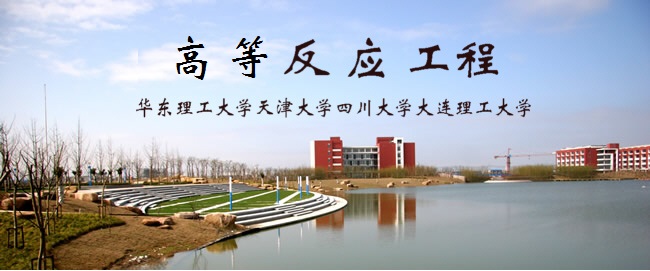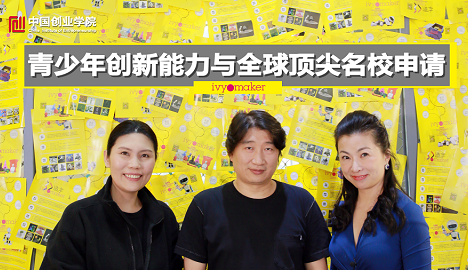
当前课程知识点:3ds Max: A Quick Start from Zero to One > Chapter 3: The Secrets of Making the Potoreal Image > 3.3.2 Light and Color > 3.3.2 02
返回《3ds Max: A Quick Start from Zero to One》慕课在线视频课程列表
返回《3ds Max: A Quick Start from Zero to One》慕课在线视频列表
在画面中
我们往往通过其表面的
光泽度
色彩纹理
表面结构
来分辨物体的种类
上节课我们讲解了
光线的传播和光的质感
这节课我们聊聊
光线与色彩的关系
真实环境下
物体会受光照的影响
呈现出丰富的颜色
从物理的角度来讲
物体的色彩由两部分组成
一部分来自光线
另一部分
来自物体表面
对光波的吸收、反射
当白色的光照射到
白色物体上时
光线不会被吸收
而是会被反弹出去
如果照射到红色物体上时
其他颜色的光线会被吸收
红色光线会被反射
然而
当光照射到黑色物体上时
所有光线会被吸收
转化成其他能量
所以
为什么在雪地环境下
会呈现白色的环境色
沙漠环境下
会呈现黄色的环境色
指的就是
光在物体表面的传播特性
光照到物体上
产生的颜色分为三种
固有色
指物体自身的颜色
光源色
在固有色基础上
被日常光源
照射到物体后所产生的色彩
环境色
物体接收由周围环境
反射而来的光线后
呈现的色彩
我们来看看这个室内场景
阳光从顶部照射到木地板上
形成柔和的黄色漫反射光线
然后再反弹到周围的物体上
旁边的这几棵红色柱子
可以很明显的
找到它们的身影
之后
这些光一部分被柱子吸收
一部分又反射到另一个表面
就是这样
经过多次的反射
将整个空间照亮
现实生活中
物体会因为
受到光线传播的影响
而改变自身的颜色
这也是初学者
往往会忽略的关系
因此在设计灯光时
有如下建议
在灯光打设前
可以先考虑一下时间和气候
以及在当前环境下
物体之间的颜色关系
可以尝试让环境光偏色
这样能使阴影
与场景更加融合
学会主观的去判断
光线的方向
光线的衰减
传播方式
学会分析反射光线、高光
漫反射光线对物体的影响
当然
除了从真实生活中
去分析光与色
我们也不要忽略
光照所带来的视觉感受
这些感受往往可以
打破一些规矩
带来不一样的画面效果
例如
这张室内场景图中的灯光
只是起到了
照亮场景的作用
但如果适当调整一下
灯光的颜色
就会给人带来
不一样的视觉感受
在生活中
我们要学会多观察和分析
光的传播对物体颜色的影响
这样创作出来的作品
才会更真实可信
所以还不快拿起你的手机
去拍摄一些周围环境的照片
看看不同光线下
灯光是如何影响物体颜色的
好了
今天的课程就到这里了
我们再见
-Fast Understand of 3ds Max,Starting Your Virtual Journey
--Preface
-Preface
-1.1 How to get 3ds Max
--1.1 02
-1.1
-1.2 Introduction to the Interface of 3ds Max
--1.2 01
--3ds Max
-1.2
-1.3.1 Project Preparation 1: Set Up Project Folder
--1.3.1
-1.3.1
-1.3.2 Project Preparation 2:Initialization Settings
--1.3.2
-1.3.2
-1.4.1 Opening and Saving Files
--1.4.1
-1.4.1
-1.4.2 Basics Operation
--1.4.2
-1.4.2
-1.4.3 Advanced Operation
--1.4.3
-1.4.3
-1.5 General Hotkeys
--1.5
-1.5
-1.6 Creating Geometric Primitives
--1.6
-1.6
-2.1 3D Modeling Overview
--2.1
-2.1
-2.2 Three Useful Modeling Methods
--2.2
-2.2
-2.3 Boolean Modeling
--2.3
-2.3
-2.4.1 Spline Modeling 1:Spline Modeling Overview
--2.4.1
-2.4.1
-2.4.2 Spline Modeling 2: Modeling From a Spline
--2.4.2
-2.4.2
-2.4.3 Spline Modeling 3:How to Edit Spline Objects
--2.4.3
-2.4.3
-2.5.1 Polygon Modeling 1:Polygon Modeling Method
--2.5.1
-2.5.1
-2.5.2 Component Selection Techniques
--2.5.2
-2.5.2
-2.5.3 Polygon Modeling 3: 16 Polygon Modeling Commands
--2.5.3
-2.5.3
-2.5.4 Polygon Modeling 4: Subdivision Modeling
--2.5.4
-2.5.4
-2.5.5 Polygon Modeling 5: Attaching and Detaching
--2.5.5
-2.5.5
-2.6.1 Advanced Modeling Skills 1:“Stereoscopic” Modeling Method
--2.6.1 01
-2.6.1
-2.6.2 Advanced Modeling Skills 2:Box Modeling Method
--2.6.2
-2.6.2
-2.6.3 Advanced Modeling Skills 3:Deconstruction Modeling Method
--2.6.3
-2.6.3
-2.6.4 Advanced Modeling Skills 4:Problems to be Considered in Modeling
--2.6.4
-2.6.4
-3.1 Rendering
--3.1 02
-3.1
-3.2.1 Render Your First Work
--3.2.1 02
-3.2.1
-3.2.2 Arnold Render Set Up
--3.2.2 01
-3.2.2
-3.2.3 Introduction to the Arnold Renderer
--3.2.3
-3.2.3
-3.2.4 Arnold Renderer 1: Sampling
--3.2.4 02
-3.2.4
-3.2.5 Arnold Renderer 2: RayDepth and Filtering
--3.2.5 02
-3.2.5
-3.3.1 What is Light?
--3.3.1 02
-3.3.1
-3.3.2 Light and Color
--3.3.2 02
-3.3.2
-3.3.3 Light and Shadow
--3.3.3 02
-3.3.3
-3.3.4 Produces Soft Shadows and Fast Shadow
--3.3.4 02
-3.3.4
-3.3.5 Six Types of Lighting
--3.3.5 01
-3.3.5
-3.4.1 Arnold Light Types
--3.4.1 01
-3.4.1
-3.4.2 Arnold Light Parameters
--3.4.2 01
-3.4.2
-3.4.3 Color Temperatures and White Balance
--3.4.3 01
-3.4.3
-3.5.1 Three-point Lighting Method
--3.5.1
-3.5.1
-3.5.2 Indoor Light Lecture 1: Make a Simple Night
--3.5.2
-3.5.2
-3.6.1 Advanced Skill 1:Rendering Tips
--3.6.1
-3.6.1
-3.6.2 Advanced Skill 2:The Normals and the Smooth Group
--3.6.2
-3.6.2
-4.1 Learn About This Chapter in Four Minutes
--4.1
-4.1
-4.2.1 How to Open the Material Editor?
--4.2.1
-4.2.1
-4.2.2 Using Physical Materials
--4.2.2
-4.2.2
-4.2.3 Three Assistants of the Material
--4.2.3
-4.2.3
-4.2.4 Create a Simple Material
--4.2.4
-4.2.4
-4.3.1 Using maps to Creat Different Looking
--4.3.1
-4.3.1
-4.3.2 Bitmap Node:A Small Node With Virtues
--4.3.2
-4.3.2
-4.4.1 UVW Mapping Method 1:Methods of Locking the Map
--4.4.1
-4.4.1
-4.4.2 UVW Mapping Method 2: UV Overlays
--4.4.2
-4.4.2
-4.4.3 Unwrap UVW 1: Basic of Unwrap UVW Modifier
--4.4.3
-4.4.3
-4.4.4 Unwrap UVW 2: Projection
--4.4.4
-4.4.4
-4.4.5 Unwrap UVW Part 3: Powerful UV Editor
--4.4.5
-4.4.5
-5.1 Animation Overvie
--5.1
-5.1
-5.2.1 3ds Max Animation
--5.2.1
-5.2.1
-5.2.2 Making Animation More Interesting Principle 1: Time and Space
--5.2.2
-5.2.2
-5.2.3 Making Animation More Interesting Principle 2: Slow Motion (slow-mo)
--5.2.3
-5.2.3
-5.2.4 Making Animation More Interesting Principle 3: Squash and Stretch
--5.2.4
-5.2.4
-5.3.1 Animation Technique 1: Parent-Child Relationship
--5.3.1
-5.3.1
-5.3.2 Animation Technique 2:Loop Animation
--5.3.2
-5.3.2
-5.4.1 Techniques of Using the Camera
--5.4.1
-5.4.1
-5.4.2 The Safeframe Cannot Be Ignored in the Camera
--5.4.2
-5.4.2
-5.4.3 Camera Movement
--5.4.3
-5.4.3
-5.4.4 Following Shot
--5.4.4
-5.4.4
-6.1 Rendering a VR Panorama With Arnold
--6.1
-6.1
-6.2 Fast Implementation of VR Interaction
--6.2
-6.2
-6.3 Fast Implementation of AR Interaction
--6.3
-6.3
-6.4 Friends of 3ds Max
--6.4
-6.4
-6.5 Self Learning and Improvement Methods
--6.5
-6.5
-6.6 Methods of Obtaining Resources
--6.6
-6.6
-7.1 PBR Technology Introduction
--7.1
-7.2 Toolbag PBR Real-time Rendering
--7.2
-7.3 Substance Painter PBR Painting
--7.3
-Shortfilm Casestudy 1:The Weapon Used in PUBG (PlayerUnknown's Battlegrounds)
--Microfilm Course 1:The Weapon Used in Eating Chicken
-Shortfilm Casestudy 2:Production experience of Classic of Mountains and Seas
--Microfilm Course 2:Production Process of Shanhaijing
-Examination

